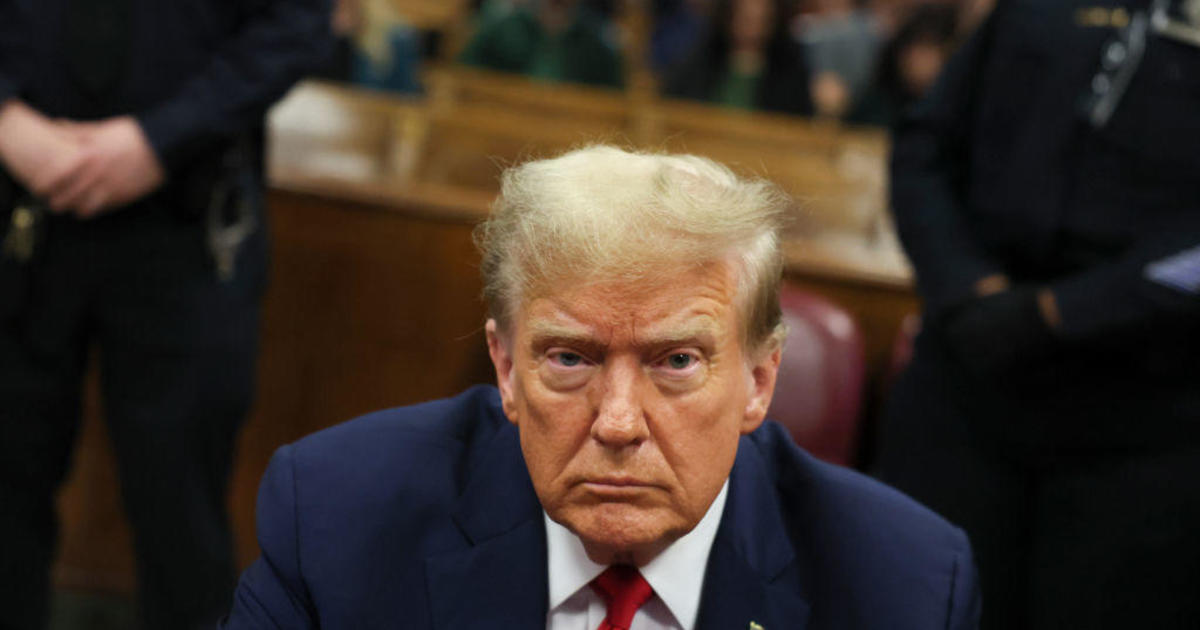Here's how -- and where -- U.S. manufacturing is coming back
Better days may well lie ahead for U.S. manufacturing, but the recovery won’t come easy or without bumps, nor will it usher in a return to the days of near-full employment for unskilled workers.
That’s according to noted economist and manufacturing expert Diane Swonk, a past president of the National Association for Business Economics whose clients include major manufacturers, Fortune 500 CEOs and elected officials.
Many residents of communities hardest hit by the decline in manufacturing, including Erie, Pennsylvania, were heartened by President Trump’s election victory, relieved to have someone they see as an advocate in the White House for the U.S. manufacturing economy. Donald Trump’s bold campaign promises offered plenty of hope, and his blunt-force approach showed early promise to many blue-collar supporters. But he hasn’t yet put forward a plan to reconcile the economic nationalism he successfully harnessed during the campaign with the broader economic fundamentals of U.S. manufacturing -- including technological change and threats from global competitors.
Swonk, a Michigan native whose company is based in Chicago, tells CBS MoneyWatch that U.S. manufacturing can indeed grow again in the current climate, but it will be led by a different kind of manufacturing -- one that relies more heavily than ever on education and training a new generation of workers. Here are a few of Swonk’s key points on the outlook for manufacturing:
You can still make good money in manufacturing, Swonk says, but it requires a different skill set, including problem-solving skills, tech expertise, even coding: “The idea on the campaign trail, there was a sense you could turn back the hands of time and recreate an environment we had in the 1950s and 60s, when you literally didn’t have to train workers very much to do repetitive jobs and get paid a decent wage that could get them a house and a car and the American dream. We need to bring up the skills level of the workers we have left in the existing pool. More firms are willing to train workers, as the labor market tightens. It’s not the old traditional kind of training -- shop class -- it’s an entirely different kind of manufacturing, often very specific to a manufacturer.”
There’s an often-overlooked reason that larger urban areas have captured economic growth while smaller cities and rural areas have weathered a vicious cycle of decline: “There’s no question the economic and political establishment has left large swaths of our population behind, and in the process of globalization we didn’t make the necessary investments we needed to make in our own human capital. One of the biggest problems we have in the United States is most education is done at the state and local level, not the federal level. All the promises to upgrade our education level for the overall country have fallen flat, because there’s an inherent mismatch for money in education based on the local conditions.”
Mobility is important for an economy to work: “You’ve got to have an ability for not just goods to flow, but for people to flow, to where they need to get skills they need. We’ve not provided any of that. What we’ve done, if anything, is let the world move forward without letting people make choices even in their lives to move forward in the economy.”
Some people on the sidelines may never return to work, due to atrophied skills, unhealthy habits and rampant drug use in the most economically depressed areas: “There are more high-wage jobs out there than we can fill in the manufacturing sector. That’s the good news. The bad news is you still can’t provide the tens of thousands if not hundreds of thousands of jobs with barely any skill set that can pay at a level commensurate with what we once called the American dream.”
Revitalizing manufacturing towns will require a different kind of labor force and, in the meantime, a strong safety net: “We need bridges for these communities so they can walk across them to a better career path. That means investments in better education and training. It means pairing a willingness of companies to invest and work with community colleges, or establish their own training programs. Can you have that happen in an environment where prices are rising and borders are closing because of nationalism? That’s very difficult.”
The decline of manufacturing is not a new problem, and the politics can be complicated, Swonk notes: “This has been decades in the making. My father worked for GM; I grew up in Detroit and know people who’ve gone through this. My best friend went into poverty when I was 16; her father died, and he was a union president. They literally had to dig up their backyard and plant vegetables to live. The only bread they had was fresh-baked because that’s all they could afford. Having seen this firsthand, the differences and the break between prosperity and poverty, those who got highly educated and those who did not, it certainly is something we’ve ignored for a very long time. It was okay to ignore it in the 1990s when we got a reprieve in the bubble economy.”
In the past we would have assumed taking a hard line on trade would boost production in one country and hurt it in others. That may not hold true today: “So much of trade and manufacturing is integrated across the continent, makes the entire continent competitive. But that’s not where the policy out of Washington, D.C., is going, and that could hurt job growth initially instead of help it. What we see now is more of a simultaneous loss in production on both sides of the border, because of the inter-linkages we have.”
Automation will be required to enhance productivity: “To some extent we are running out of workers. Especially with less immigration, we have an aging population that’s going to need more services. The Baby Boomers are retiring, and some are dying out. All of this requires we think about policies for the next century.”
Swonk says many of those who blame trade for taking their jobs ironically have the most to lose from tighter regulations on trade, in the form of higher costs for consumer products. And tighter trade could hit rural communities particularly hard -- for instance, limiting markets for farmers to sell their crops: “The costs of trade are specific, and the benefits are diffuse. Trade arguments have always been difficult because even though people benefit from the free flow of goods, better quality and prices, when you fail to create a safety net or a bridge for those displaced you are going to have backlash. The trade protection programs, displacement programs, were poor and ineffective.”
Getting specific, Swonk says the shale industry is bouncing back, and deregulation will give it another boost. The resulting cheaper fuel could have positive spillover effects for traditional manufacturing. Meantime, to the down side, vehicle sales appear to be peaking: “The one sector of traditional manufacturing that’s sort of been a silver lining -- autos -- has started to slow. In a broad sense, recovery is taking hold in much less traditional manufacturing -- “behind-the-glass” manufacturing that requires more education, such as making medical devices or creating goods through 3-D printing.”
Extreme solutions -- such as paying people not to work, or trying to recreate the nation’s past manufacturing glory -- are equally unrealistic: “The reality is much more complex and messy. These are proud people. They don’t just want handouts. They want to work.”
On the consequences of failure: “If we cannot figure out a way to leverage what skills they have and bring them up to a speed where they can work in our economy, with some support, then what we will have is a further rebellion and regression. History is pretty strong on these lessons, and it wasn’t pretty in the 1930s.”




